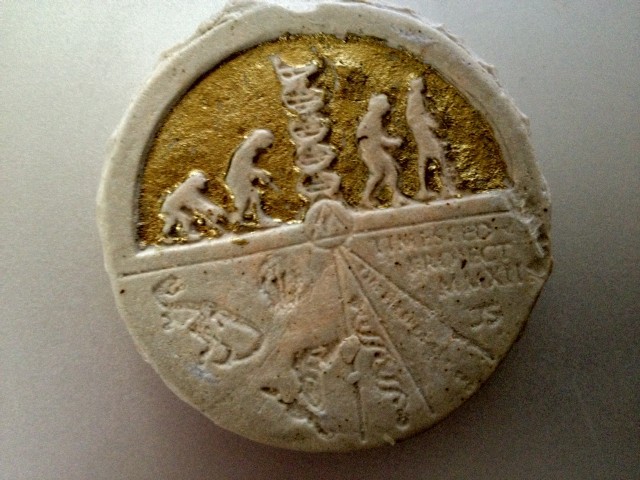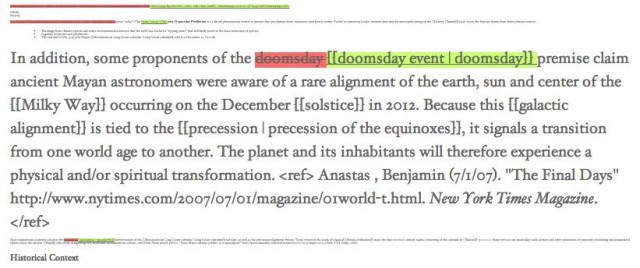The Kids Are Deranged: The Best of NYU's ITP Student Show

Tonight is the second night of the NYU Interactive Telecommunications Program spring show, with thesis projects and schemes and fun things. It’s sheer chaos, and you can stop by tonight from 4 to 8 p.m. if you want to see some good old fashioned wackiness.
A few of the student projects really stood out for me as art objects or as great thinking or excellent applied programming or as just plain fun. There were probably a lot of great things that I didn’t “get” or didn’t appreciate or just missed, so human error applies here.
• Google Booth is a small constructed room. There’s a slot on the outside; people can write down their Google searches and stick them in. If you’re on the inside, you get the requests, and you have some reference books to use. “CAN I GOOGLE FOR THEIR ANSWER?” I asked project co-creator Stefanie Kleinman. “NO!” she said. It was really stressful but super gratifying to answer questions and shove them back out through the “results” slot to the waiting people. I could have stayed in there for the rest of my life. I have no idea how close I came to getting the answer to “how big is China in square feet” right but why did someone want to know anyway? They were just messing with me! Me and Stefanie talked about the pleasures of Mind-Googling for a while. It really slowed everything down quite nicely.
• Kioku is basically ready for purchase by Google or Facebook. It sorts your photos by contrast, geography, “likes,” time, space, number of subjects, color and more.
• Another project by someone that you should hire immediately is Wiki-History. It’s just a one-page demo now, but Kate Tibbets is writing the code to interface with all of Wikipedia, to show a visual timeline of a page’s edit history.

• The Descriptive Camera is awesome. (The camera uploads a jpg to a human source that describes the photo in text and then the camera prints that description out. Love you!)
• Obviously, Natalie Be’er’s Fostr.org solves a huge missing link in the animal care spectrum. Foster care for animals has never had central organization before, and was all done agency-by-agency. Ta da. Fixed. So wonderful to see someone identify a missing component of the Internet and step right up.
• Risky Lisky is an absolutely bonkers and useless and wonderful game: it turns any email list into a fantasy sports team — but only you know it. It’s impossible to explain, but they do a pretty good job. This is sort of the opposite of annoying app gamification trends. It’s a way to make fun out of the awful.
• What’s notable about a show like this, of course, is that after a while you start thinking: man, when the lights go out for good, none of this stuff is going to be of much use. Your flat screen is going to become a dining table when there’s no more power plants. That’s why I loved Jackson Taylor Snellings’ ridiculous project, to which I award my honorary Best In Show Award. He is leaving “ultra-durable” objects — ceramic coins — around the globe, so that when we’ve all gone poof, there’ll maybe be at least some potentially legible markers of our existence. The coins have markings that’ll prove that we at least knew where we were located in our solar system, that we knew about evolution, and that we knew about math and society. They’re a fun play on narcissism too. He’s not just leaving something for the future, he’s leaving a record of himself — including some small attempts at leaving genetic material embedded in the coins.
